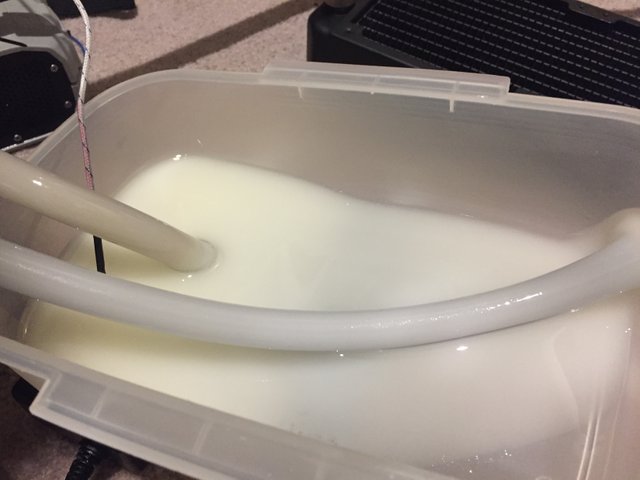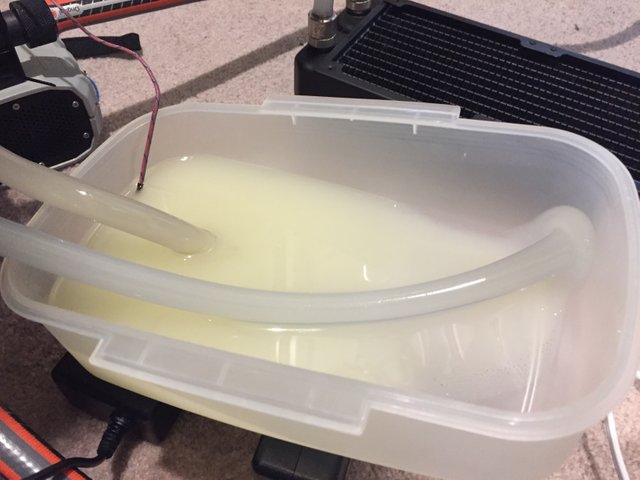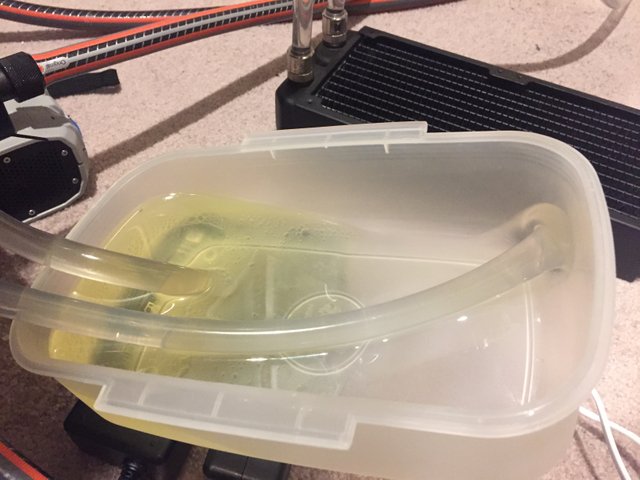From Water 🌊 Cooling to Oil 🛢️ Cooling!
Hi there,
I have just started doing some experiments on oil cooling. Since water is already very well exploited, and for me, the next step of liquid cooling for electronics will be to use immersion cooling techniques.
Therefore I decided to do some research on practical oil cooling systems where one of the biggest problems is water (humidity). Below you will find a picture of a test system where I am deliberately introducing water into a mineral oil fluid (like normal fresh cooking oil) with the intent to understand the electrical and thermal conductivity of it while having a percentage of water mixture. I am also trying to understand how long water takes to evaporate under a certain mixture temperature.
The Test: Mayo Step (the START)
Started around 5:30PM on the 4/8/2018.
As you can see, the mixture is typical of a "mayo" solution (as usually said on oil cooling). That means water is present. With time, water will evaporate, and the normal oil colour will start to be revealed. Current mixture temperature is 24 Celsius degrees. I am deliberately heating it, since room temperature is around 17, to facilitate evaporation. I have also set the returning liquid to drop at a higher elevation so that more area gets in contact with the mixture, increasing the water evaporation.
Now it's waiting time and later new pictures will come to check the status of the mixture.
UPDATE: I have added a bit more of mineral oil to the quantity above.
After 18 hours
Oil/water separation is beginning to be evident... Temperature is stable at 24. At this point, there was a 3 mm layer of clean oil at the surface.
The process is very slow, but I am wondering if now that there is some good layer of oil at the top (water is heavier than oil), it is going to take longer or if because of the fluid exposure to the air from the return pipe, due to the elevated location, it will provide somehow a linear evaporation.
After 49 hours
The visual evolution over the last 24 hours has been drastically increased. As water is "pressured" into a higher concentration of oil, the evaporation over the exposed elevation seams much higher.
There are still some bubbles of water. I expect these to disappear much slowly due to the "glueing" effect. They are not being forced into the loop and therefore will be less easily detaching from these locations, evaporating into the remaining mixture. They will eventually evaporate, but probably not on the same timescale. I will wait more 24 hours before doing something.
After 78 hours
As you can see, after all the water is gone. There is little evolution to the bubbles. I was somehow expecting this and the only way to deal with it, it to allow the liquid to move more around. Let's say, drop from an higher place into the place where you see the water bubbles.
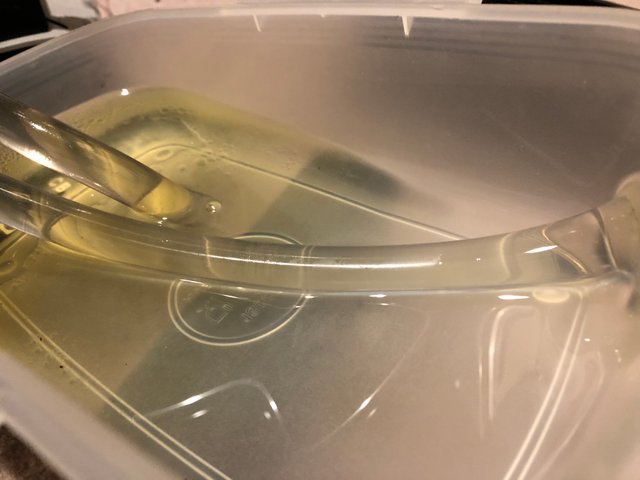
Closer for bigger detail...
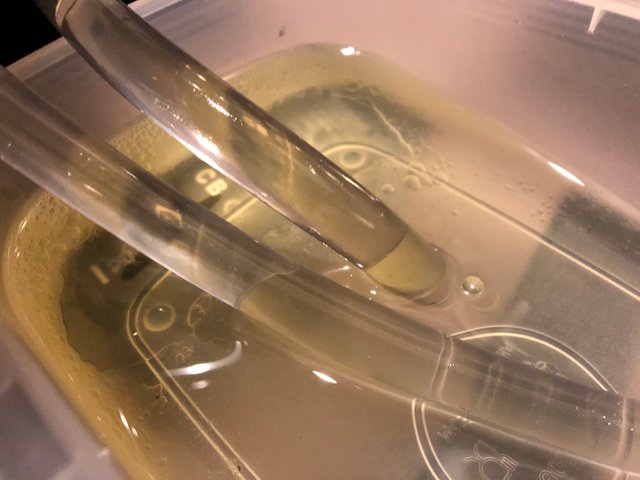
This concludes (for me) this phase of the experiment since I do not expect the water bubbles to get away. I will do some electrical experiments first and then the next step will be to deep dive some real electronics on it and see how the pump handles the heat. Then if necessary, use some fans to cool down the radiator and check if the cooling solution works effectively.
Cheers









RESTEEM if you wish to show others what you have learned... and,
VOTE for Witnesses
I was one of them, forykw!
Status: (disabled) - 10/03/2018
